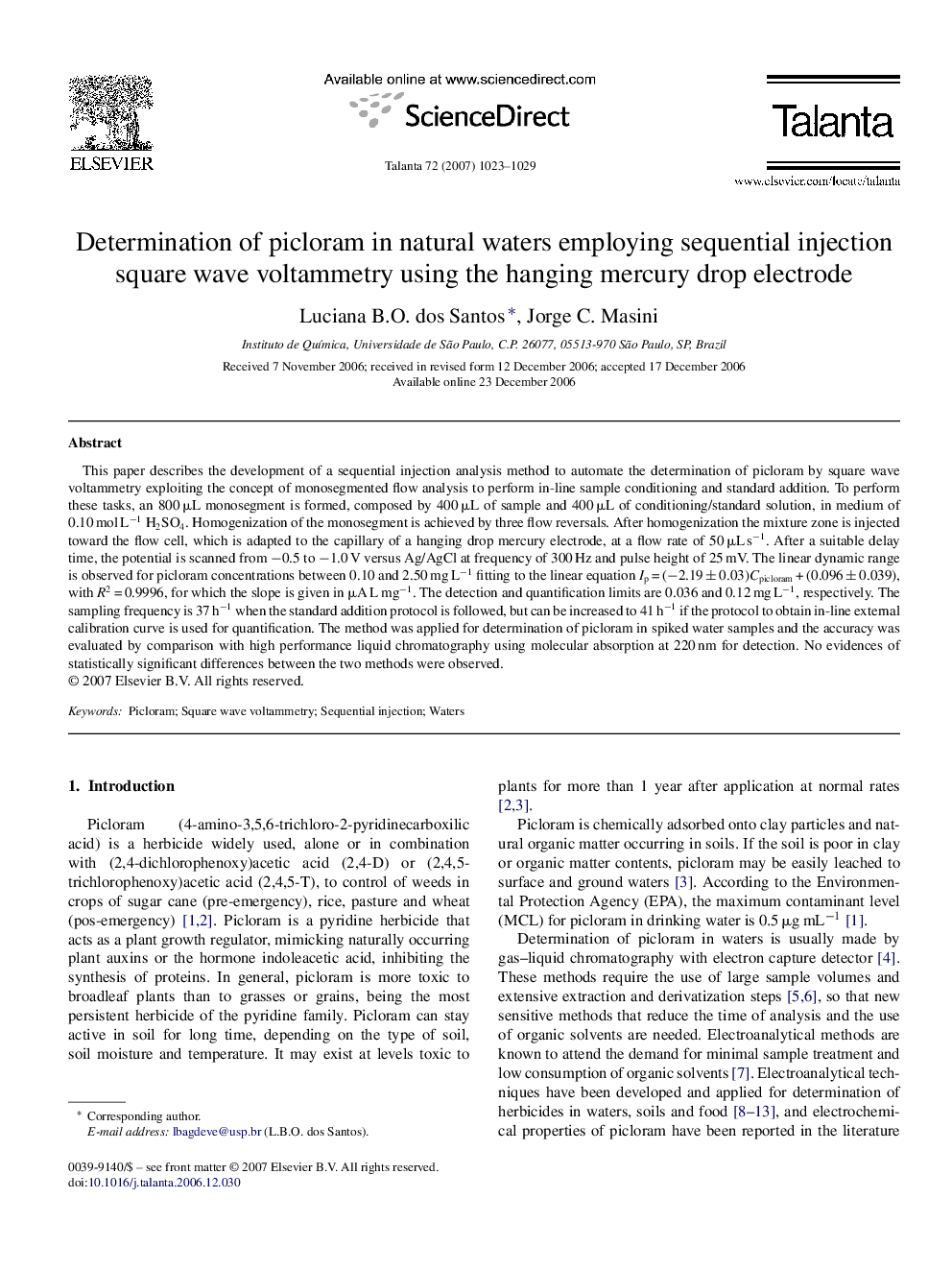| Article ID | Journal | Published Year | Pages | File Type |
|---|---|---|---|---|
| 1244993 | Talanta | 2007 | 7 Pages |
Abstract
This paper describes the development of a sequential injection analysis method to automate the determination of picloram by square wave voltammetry exploiting the concept of monosegmented flow analysis to perform in-line sample conditioning and standard addition. To perform these tasks, an 800 μL monosegment is formed, composed by 400 μL of sample and 400 μL of conditioning/standard solution, in medium of 0.10 mol Lâ1 H2SO4. Homogenization of the monosegment is achieved by three flow reversals. After homogenization the mixture zone is injected toward the flow cell, which is adapted to the capillary of a hanging drop mercury electrode, at a flow rate of 50 μL sâ1. After a suitable delay time, the potential is scanned from â0.5 to â1.0 V versus Ag/AgCl at frequency of 300 Hz and pulse height of 25 mV. The linear dynamic range is observed for picloram concentrations between 0.10 and 2.50 mg Lâ1 fitting to the linear equation Ip = (â2.19 ± 0.03)Cpicloram + (0.096 ± 0.039), with R2 = 0.9996, for which the slope is given in μA L mgâ1. The detection and quantification limits are 0.036 and 0.12 mg Lâ1, respectively. The sampling frequency is 37 hâ1 when the standard addition protocol is followed, but can be increased to 41 hâ1 if the protocol to obtain in-line external calibration curve is used for quantification. The method was applied for determination of picloram in spiked water samples and the accuracy was evaluated by comparison with high performance liquid chromatography using molecular absorption at 220 nm for detection. No evidences of statistically significant differences between the two methods were observed.
Related Topics
Physical Sciences and Engineering
Chemistry
Analytical Chemistry
Authors
Luciana B.O. dos Santos, Jorge C. Masini,
